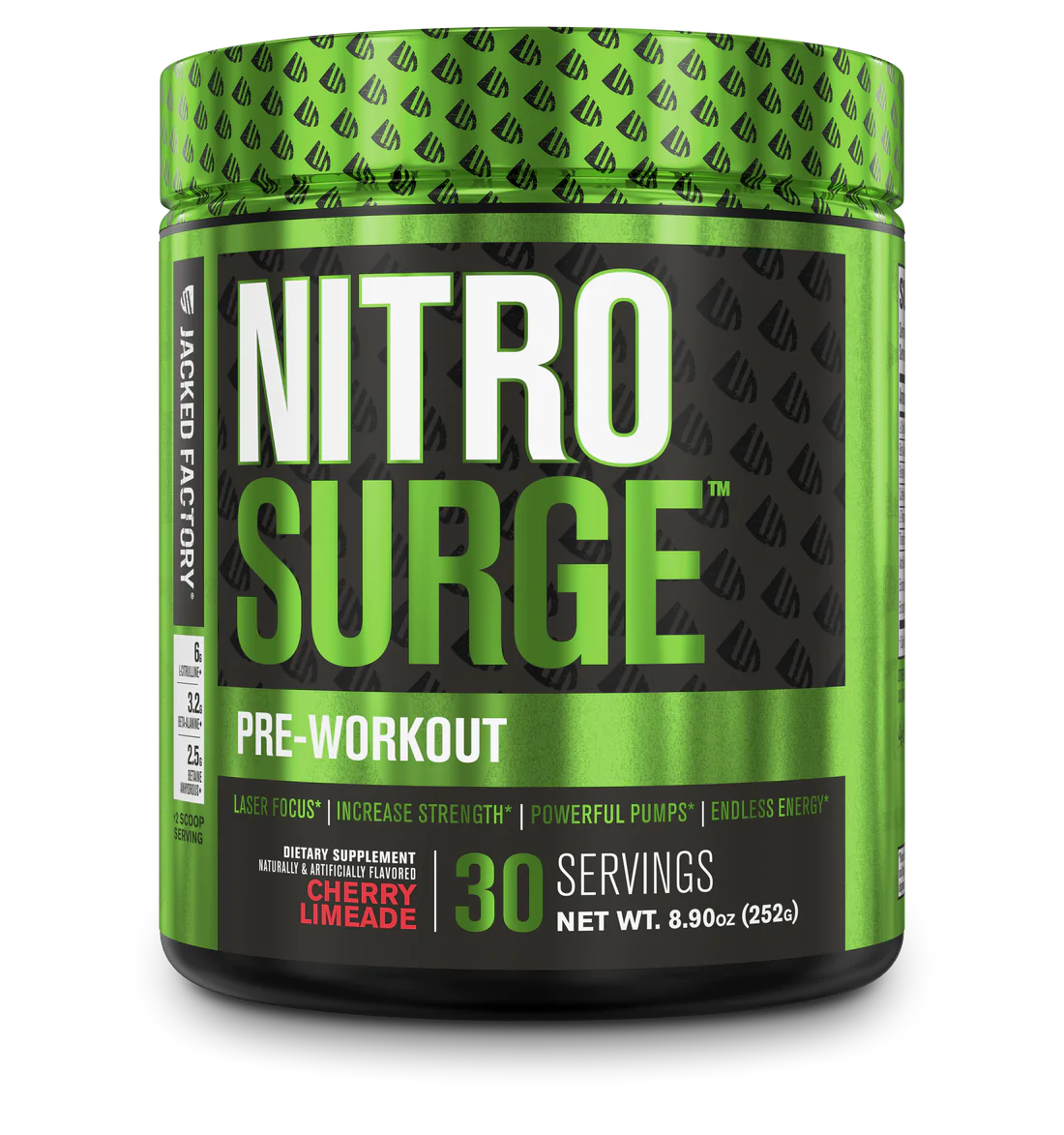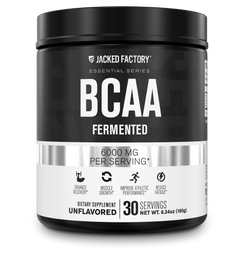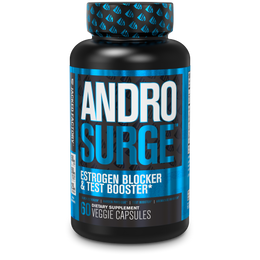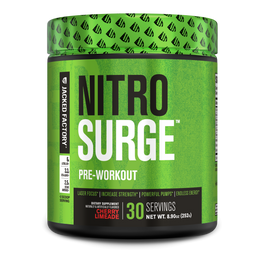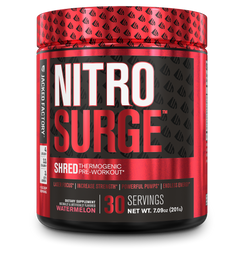D-aspartic acid (DAA) is an amino acid and an isomer of L-aspartic acid (LAA), which is one of the 23 amino acids encoded by DNA that synthesize proteins in humans.
DAA is found in the human body and various foods, but in much smaller amounts that its counterpart LAA.
Despite its minimal production in the brain, DAA appears to play a significant role in our neuroendocrine system, especially with regards to the production of male sex hormones, androgens, and growth factors.
D-Aspartic Acid as a Testosterone Booster
In recent years, supplementation with DAA has garnered interest for athletic performance enhancement.
Read on as we take a look at the science behind DAA and its use for boosting testosterone levels.
It should also be noted that aspartic acid and its base, aspartate, are biologically identical in many regards so the acronym ”DAA” will refer to both forms.
Production of Testosterone, GH, and IGF-1 in Males
The primary male sex hormone produced by the testes is testosterone. Testosterone is the most potent anabolic hormone in humans.
The production of testosterone (and many other hormones) is controlled by an intricate feedback system between the hypothalamus, pituitary gland, testes (called the HPTA axis) and the liver.
As you can see from the diagram below, the HPTA has an innate negative feedback loop that suppresses the secretion of hormones such as GnRH (gonadotropin releasing hormone), LH (luteinizing hormone) and FSH (follicle-stimulating hormone), which in turn prevents testosterone from increasing.

Contrarily, increases in GnRH lead to increases in LH and FSH levels which go ultimately on to stimulate the production of testosterone.
Moreover, GH and IGF-1 are also regulated by the HPTA axis. When the hypothalamus produces growth hormone-releasing hormone (GHRH), the pituitary releases GH in a pulsatile fashion. GH then goes on to signal the liver to produce IGF-1.
With this simple grasp of how these hormones are produced in males, let’s take a look at how DAA can impact their production.
The Role of D-Aspartic Acid in Males
Several studies in animals suggest that DAA works by stimulating luteinizing hormone-releasing hormone (LHRH) in the hypothalamus, which tells the pituitary to secrete LH. [1,2,3]
This effect appears to be mediated by neurons in the hypothalamus and anterior pituitary gland that have neural nitric oxide synthase (nNOS), as a study showed that the effects of DAA on LHRH were blunted when NOS is inhibited.[4]
Thus, NO is ultimately what tells the hypothalamus to produce LHRH (note that NO production in other parts of the body doesn’t affect LHRH production). Interestingly, the neurotransmitter gamma-aminobutyric acid (GABA) inhibits NO production in the brain, which makes sense since DAA inhibits GABA production.
This is a curious finding as though as it could suggest that compounds/supplements that increase GABA in the brain (like phenibut) may be a bad idea for testosterone production.
It is also suggested that DAA may actually also stimulate the production of thyroid hormones, specifically T4 and T3. [5]
Hypothesis
It is hypothesized that this occurs from the oxidation of DAA in the thyroid gland to hydrogen peroxide, a necessary precursor for the iodination of tyrosyl compounds (which is essential for the synthesis of thyroid hormones).
Long-Term Use of D-Aspartic Acid
- DAA enacts a reverse feedback mechanism as testosterone levels in the body begin to increase above a physiological range; the body naturally decreases the production of LH since more testosterone is not needed (which would make sense as DAA tends to maximize testosterone levels around the 3-4 week mark).
- Neurons containing nNOS become desensitized to the effects of DAA, resulting in less LHRH output. It is possible that giving these neurons a “break” from DAA resensitizes them to the effects.
Primary Benefits of D-Aspartic Acid in Males
At the time of this article, many of these benefits are based on anecdotes, animal studies, and suppositions.
Keep in mind that animal studies and anecdotes don’t necessarily translate completely to how compounds will act in most humans.
The unfortunate case for DAA is that human studies on DAA intervention remain scarce (and the few studies that do exist appear rather underwhelming). [6]
Anecdotal evidence has been positive in some individuals, and negative in others, who supplement with DAA, so further studies will certainly be helpful. Factors to consider that could alter the response to DAA include age, endocrine health, training status, diet, etc.
That being said, here are some of the most reported benefits of DAA use:
- Elevates physiological levels of testosterone, growth hormone, and insulin-like growth factor 1, all of which have positive ramifications on athletic and body composition.
- May act to increase thyroid hormone production (T4 and T3) via the production of hydrogen peroxide from oxidation of DAA in the thyroid gland. Elevating levels of thyroid hormones ultimately will increase the metabolic rate.
Testosterone, GH, and IGF-1 all have implications for speeding up the recovery time from resistance training, enhancing muscle growth, increasing work capacity, and libido, among other factors for the active individual.
However, it should be noted that increases in testosterone within physiological ranges, as seen with DAA supplementation, appear to have minimal effect on healthy males.
This is to say that unless you’re producing less-than-nominal amounts of testosterone, the benefits of DAA may not be significant.
Possible Side Effects of D-Aspartic Acid
DAA use, even in the short-term, can induce a variety of side effects that may override many of its benefits when all is considered. These side effects include:
- Increased dihydrotestosterone (DHT) levels which may cause hair loss and acne.
- Increased estrogen levels (due to aromatization of testosterone) which may cause bloating, gynecomastia, prostate issues, and low sex drive (an estrogen blocker can be used to combat this).
- Decrease production of GABA, which can result in a variety of side effects including depression and lack of energy.
Who Should Use D-Aspartic Acid
Some individuals that may benefit from DAA supplementation include:
- Males, over 21 years of age, that have low testosterone levels
- Males who have low libido or feel like their ability to recover from training has been lacking
NOTE: It is wise to have your testosterone levels overseen by a licensed medical physician prior to and throughout your time supplementing with DAA.
Avoid Using D-Aspartic Acid if you are:
- Female (mainly due to the uncertainty of its effects at the time of writing this)
- Under 21 years of age or have elevated testosterone levels (hypergonadism)
- Dealing with excess levels of DHT or estrogen
- Dealing with hyperthyroidism since this would likely exacerbate the issue
- Have clinical depression or mental health issues, as GABA is crucial for treating these conditions
References:
- D’Aniello, A. (2007). D-Aspartic acid: an endogenous amino acid with an important neuroendocrine role.Brain research reviews, 53(2), 215-234.
- D’ANIELLO, A. et. al. (2000). Occurrence of D-aspartic acid and N-methyl-D-aspartic acid in rat neuroendocrine tissues and their role in the modulation of luteinizing hormone and growth hormone release.The FASEB Journal, 14(5), 699-714.
- Di Fiore, M. M., Assisi, L., Botte, V., & D’Aniello, A. (1998). D-Aspartic acid is implicated in the control of testosterone production by the vertebrate gonad. Studies on the female green frog, Rana esculenta.Journal of endocrinology,157(2), 199-207.
- Topo, E., Soricelli, A., D’Aniello, A., Ronsini, S., & D’Aniello, G. (2009). The role and molecular mechanism of D-aspartic acid in the release and synthesis of LH and testosterone in humans and rats. Reproductive Biology and Endocrinology, 7(1), 1.
- Willoughby, D. S., & Leutholtz, B. (2013). d-Aspartic acid supplementation combined with 28 days of heavy resistance training has no effect on body composition, muscle strength, and serum hormones associated with the hypothalamo-pituitary-gonadal axis in resistance-trained men.Nutrition Research, 33(10), 803-810.
- Topo, E., Fisher, G., Sorricelli, A., Errico, F., Usiello, A., & D’Aniello, A. (2010). Thyroid Hormones and D‐Aspartic Acid, D‐Aspartate Oxidase, D‐Aspartate Racemase, H2O2, and ROS in Rats and Mice. Chemistry & biodiversity, 7(6), 1467-1478.

